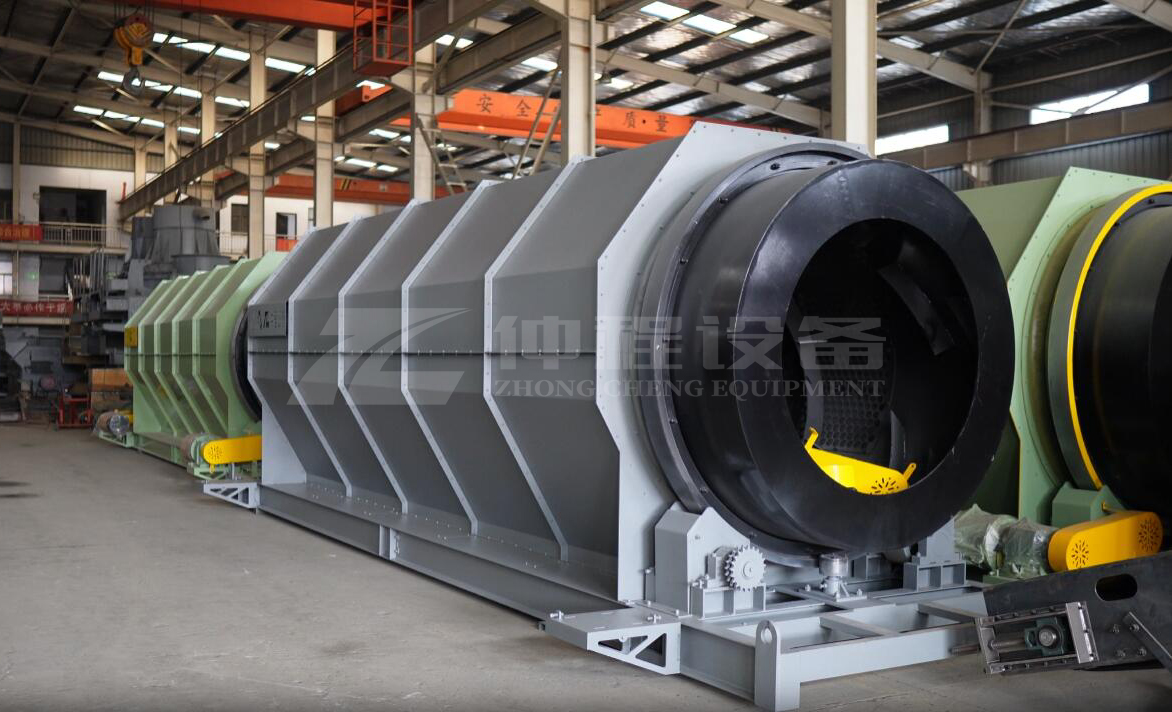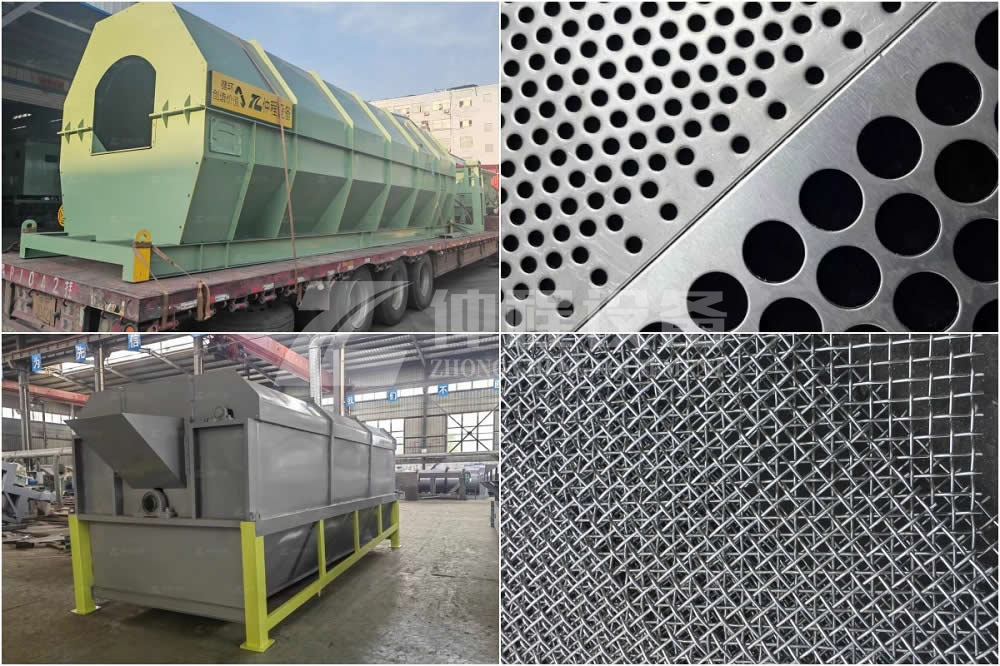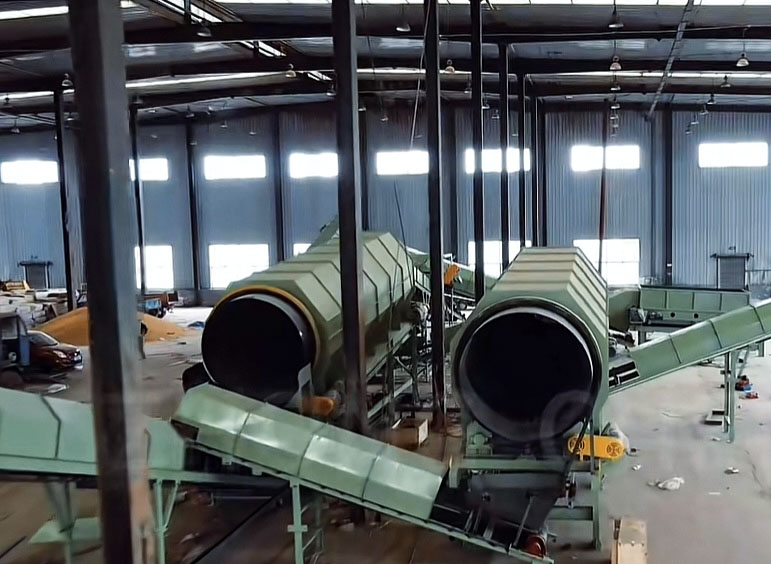The Role and Functionality of Drum Screens in Waste Sorting Equipment
In the realm of waste management, the efficient separation of different types of waste is crucial for recycling and proper disposal. Among the various technologies employed in this process, drum screens, also known as trommel screens, play a significant role in sorting mixed waste streams. This article delves into the functionality, advantages, and applications of drum screens within waste sorting equipment, highlighting their importance in promoting sustainable waste management practices.

Functionality of Drum Screens
A drum screen is essentially a cylindrical drum with a perforated surface that rotates around its axis. As waste materials are fed into one end of the rotating drum, they are subjected to a series of mechanical actions. The rotation causes the material to tumble and mix, allowing smaller particles to fall through the holes in the drum's surface while larger items continue to move along the length of the drum. This simple yet effective mechanism enables the separation of waste based on size, which is a fundamental step in many recycling processes.

Advantages of Using Drum Screens
1. Efficiency and Versatility: Drum screens can handle a wide range of waste materials, from construction debris to municipal solid waste, making them highly versatile. Their design allows for easy adjustment of the screen openings, enabling the processing of different sizes of waste.
2. Simplicity and Reliability: The basic principle behind drum screens makes them relatively simple to operate and maintain. They have few moving parts, which reduces the likelihood of mechanical failures and simplifies maintenance procedures.
3. Cost-Effectiveness: Due to their durability and low operational costs, drum screens offer an economical solution for waste sorting. They require minimal energy input, contributing to lower overall operating expenses.
4. Environmental Impact: By effectively separating recyclable materials from non-recyclables, drum screens help increase the recovery rate of valuable resources, thereby reducing the environmental footprint associated with waste disposal.

Applications in Waste Management
Drum screens find application across a variety of waste management scenarios:
- Recycling Facilities: In recycling centers, drum screens are used to separate paper, plastics, metals, and other materials, ensuring that each type of waste is processed appropriately.
- Construction and Demolition Sites: These sites generate large volumes of mixed waste, including concrete, wood, and metal. Drum screens assist in sorting these materials, facilitating reuse or specialized recycling.
- Organic Waste Processing: For composting operations, drum screens can be used to remove contaminants and oversize materials from organic waste, improving the quality of the final compost product.
As the world continues to face challenges related to waste management, innovative solutions like drum screens provide a practical approach towards more sustainable handling of waste. By efficiently sorting waste, these devices not only contribute to the conservation of natural resources but also support the transition towards a circular economy. As technology advances, it is expected that the efficiency and capabilities of drum screens will further improve, playing an even greater role in the future of waste management.
-
 Trommel screenTrommel screen, also known as drum screens, are widely used in various industries for sorting and separating materials.Get Quote
Trommel screenTrommel screen, also known as drum screens, are widely used in various industries for sorting and separating materials.Get Quote -
 Crop straw double shaft shreddApplications:Biomass Energy Production: Shredded straw can be used as a feedstock for bioenergy plants to produce electricity or heat.Livestock Feed: Reduced-si...Get Quote
Crop straw double shaft shreddApplications:Biomass Energy Production: Shredded straw can be used as a feedstock for bioenergy plants to produce electricity or heat.Livestock Feed: Reduced-si...Get Quote -
 Zhongcheng Air Drum SeparatorAir drum separators effectively separate lightweight materials (e.g., plastics, paper) from heavier materials (e.g., metals, glass). This high efficiency is cru...Get Quote
Zhongcheng Air Drum SeparatorAir drum separators effectively separate lightweight materials (e.g., plastics, paper) from heavier materials (e.g., metals, glass). This high efficiency is cru...Get Quote
-
2024-05-18Mobile Jaw Crusher PlantMobile jaw crushing station is a novel rock crushing equipment, also known as mobile crushing station. The purpose of its design concept is to stand from the cu...
-
2024-05-18Spring Cone CrusherSpring cone crushers are generally used in the medium and fine crushing links of mine crushing, and are mainly used in the secondary crushing and tertiary crush...
-
2024-08-22Medical waste shredderWorking Principle:Feeding Mechanism: Medical waste is fed into the shredder through a hopper or chute. The feeding mechanism ensures that the waste is introduce...
-
2023-01-12Waste FeederWaste feeder was specially designed to optimize municipal solid waste sorting systems. The Drum Feeder ensures that your sorting system, baler or shredder has a...
-
2024-08-16Crop straw double shaft shredderApplications:Biomass Energy Production: Shredded straw can be used as a feedstock for bioenergy plants to produce electricity or heat.Livestock Feed: Reduced-si...



